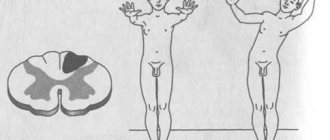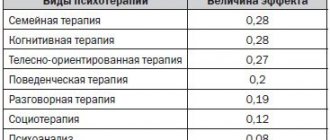Emotionally volitional disorders in children.
The formation of the emotional-volitional sphere is one of the most important conditions for the formation of a child’s personality, whose experience is continuously enriched. The development of the emotional sphere is facilitated by family, school and life, which surrounds and constantly influences the child. Emotions play a significant role from the very beginning of a baby’s life, serve as an indicator of his relationship with his parents, and help him learn and respond to the world around him. Currently, along with general health problems in children, experts note with concern the increase in emotional-volitional disorders, which result in more serious problems in the form of low social adaptation, a tendency to antisocial behavior, and learning difficulties.
Children's grief at the loss of loved ones
Children, like adults, always experience the loss of a loved one. In general, children's grief is characterized by such features as delay, hiddenness, surprise, and unevenness. The child may not show immediate grief, and the acute reaction is sometimes delayed for months. In some cases, real awareness and experience of loss comes very late and under the influence of some significant event, for example, another loss. The child may not show overt signs of grief, such as crying or verbally expressing emotions, but may show signs of hidden bereavement in the form of actions, behavior changes, and neurotic symptoms. The open expression of a child's grief sometimes turns out to be unexpected for those around him: the child was just playing, frolicking, and suddenly “breaks into tears.” It is noteworthy that in children, grief often has a wave-like character, when a surge of emotions and a stream of tears are replaced by relative calm or even animation and moments of fun. Children experience grief very unevenly and tend to express their sadness sporadically over a long period of time.
The reaction of children to the death of a loved one often remains a sealed secret for adults. It happens that a child’s reaction to a loss shocks those around him or, at a minimum, leaves them bewildered. And sometimes adults don’t even know whether the child is experiencing loss, and if so, how exactly he is experiencing it. Moreover, it is not clear how to help him.
Parents of bereaved children typically face questions such as:
- Should I tell my child about the death of a loved one or not?
- should he be included in the family mourning process and funeral arrangements or not?
- Should I take it with me to the funeral or not?
- to remember the deceased with the child or not?
Contacting a child psychologist will allow parents not only to prevent the undesirable consequences of loss for the child, but also to achieve certain positive results.
Aggression in children.
Let's talk about the most common sign of this disorder - aggression in a child, let's look at it in detail: The cause of aggression in children. Where does a child's aggression come from? Signs of aggression in children. How is aggression treated in children? Manifestations of aggression can be in the form of demonstrative disobedience to adults, physical aggression and verbal aggression. Also, his aggression can be directed at himself; he can hurt himself, but more often his peers. The child becomes disobedient and with great difficulty succumbs to the educational influences of adults. Aggression in a child is expressed in poor self-control and lack of awareness of one’s actions. Children's aggression can be controllable and uncontrollable. Uncontrolled aggressiveness is harmful, just like uncontrollable fear, uncontrollable delight and any other uncontrollable emotion. Aggression is not appropriate in relationships between relatives and friends at school, except for comic aggressiveness, when aggressiveness is a game, both parties are interested in such a game, perceive it only as a game and enjoy it, accordingly, there is no physical violence in it. A child may repel others with remarks expressing contempt or impatience, or insolence, but most often there is hard tactile contact. Increased aggressiveness in children is one of the most pressing problems not only for doctors, teachers and psychologists, but also for society as a whole. The main distinguishing feature of aggressive children is their attitude towards their peers. Aggression in children is perhaps the most important problem, since the number of children with such behavior is growing rapidly from year to year.
Signs of aggression in children
A child can feel his emotions, but he is not always able to recognize them and understand the reasons for his behavior. But as a rule, parents notice too late that something is happening to their child. Often, signs of aggression in children are the actions they perform:
- They are hysterical, often for show.
- They don't admit their mistakes.
- They pinch.
- They are angry.
- They call names.
- They take away the toys. .
- They refuse to carry out orders.
- They get angry (stomping their feet and banging their hands).
- Spit
- They use offensive words.
- They beat their peers
- They swing at others.
- They are taking revenge.
If in a family parents suppress the child in every possible way when raising a child, the child simply begins to hide his feelings. But as we can guess, they don’t go anywhere, but accumulate like a snow globe and in the near future an “explosion of emotions” occurs. An aggressive child is often driven by fear. Such a child is either afraid to be left alone, he thinks that no one can love him, no one will invite him for a walk, etc. All children want to be interested in them, to be invited to any events, to be spoken with kind words. The same is desired by a child who simply does not yet understand that aggression pushes people away from him even more. Accordingly, if parents do not reach out to a child who shows aggression and anger, then he may think about what else to do to make his parents love him again.
Volitional disorders
Will is the mental activity of the individual, which is aimed at a specific goal or overcoming obstacles. Without this, a person will not be able to realize his intentions or solve life problems. Volitional disorders include hypobulia and abulia. In the first case, volitional activity will be weakened, and in the second, it will be completely absent.
If a person experiences hyperbulia, which is combined with distractibility, then this may indicate a manic state or delusional disorder.
The desire for food and self-preservation are disrupted in the case of parabulia, that is, when a volitional act is perverted. The patient, refusing normal foods, begins to eat inedible foods. In some cases, pathological gluttony is observed. When the sense of self-preservation is impaired, the patient can cause serious injury to himself. This also includes sexual perversions, in particular masochism and exhibitionism.
Spectrum of volitional qualities
Cognitive and emotional-affective disorders in dyscirculatory encephalopathy
P
Mental disorders, primarily cognitive and emotional disorders, are one of the most common manifestations of organic brain diseases.
In cases where impairments of memory and other cognitive functions are so pronounced that they interfere with the implementation of professional and social activities in the same volume and quality, it is customary to talk about dementia
. Dementia is especially common in old age. Population studies estimate that 5 to 20% of older adults have dementia. Dementia and pre-dementia cognitive disorders are regularly combined with emotional disorders, primarily in the form of depressive and anxiety-depressive disorders [22].
The undisputed leaders in the list of causes of dementia in the elderly are Alzheimer's disease and cerebrovascular insufficiency. Chronic progressive forms of cerebral insufficiency of vascular etiology are traditionally designated in the domestic literature by the term discirculatory encephalopathy (DE) [15]. The pathogenesis of DE is very complex and is associated with both chronic cerebral hypoperfusion and repeated acute cerebrovascular accidents, as well as, in some cases, with liquorodynamic disorders and a secondary neurodegenerative process [3–5,29,34].
“The phenomenon of dissociation” in the pathogenesis of mental disorders in DE
The leading role in the formation of cognitive failure in DE is played by damage to the deep parts of the white matter of the brain and the basal ganglia
, which leads to disruption of the connection between the frontal brain and subcortical structures (disconnection phenomenon). The mechanism of formation of disconnection is associated primarily with arterial hypertension and appears to be as follows. Chronic uncontrolled arterial hypertension leads to secondary changes in the vascular wall - lipohyalinosis, which develops mainly in the vessels of the microvasculature. The resulting arteriolosclerosis leads to changes in the physiological reactivity of blood vessels. Under these conditions, a decrease in blood pressure as a result of the addition of heart failure with a decrease in cardiac output or as a result of excessive antihypertensive therapy, or as a result of physiological circadian changes in blood pressure leads to the occurrence of hypoperfusion in the areas of the terminal circulation. The latter include the above-mentioned deep cerebral structures [9,23,26,37].
Acute ischemic episodes in the basin of deep penetrating arteries lead to the occurrence of small-diameter lacunar infarcts in the deep parts of the brain. If the course of arterial hypertension is unfavorable, repeated acute episodes lead to the emergence of the so-called. lacunar state, which is one of the variants of multi-infarct vascular dementia [25,29]. In addition to repeated acute disorders, the presence of chronic ischemia in the areas of terminal circulation is also assumed. A marker of the latter is the thinning of the periventricular or subcortical white matter - leukoaraiosis, which pathomorphologically represents a zone of demyelination, gliosis and expansion of the perivascular spaces [9,23,26,32]. In some cases of an unfavorable course of arterial hypertension, subacute development of diffuse lesions of the white matter of the brain with a clinical picture of rapidly progressing dementia and other manifestations of disconnection is possible, which is sometimes referred to in the literature as Binswanger disease
[30].
Neuropsychological manifestations of the “disconnection phenomenon”
The leading role in the formation of cognitive impairment in cerebrovascular insufficiency is played by the separation of the frontal lobes and subcortical formations, which leads to the occurrence of secondary dysfunction of the frontal lobes of the brain. The frontal lobes are very important in cognitive activity. According to the theory of A.R. Luria, which is currently shared by the vast majority of neuropsychologists, the frontal lobes are responsible for the regulation of voluntary activity: the formation of motivation, choosing the goal of activity, building a program and monitoring its achievement [10–12]. At the same time, the dorsolateral frontal lobe of the cortex and its connections with the striatal complex provide switching of attention, which is necessary for changing the activity algorithm. The orbitofrontal regions are involved in the suppression of goal-irrelevant impulses, thus ensuring stability of attention and the adequacy of behavioral reactions. In addition, the orbitofrontal frontal cortex is in close relationship with the hippocampus, ensuring stability of attention in mnestic activity [13,37].
Dysfunction of the frontal lobes of the brain leads to the formation of dysregulatory syndrome
. In this case, the operational mechanisms of memory, perception, motor and language skills are preserved, but the programming of activity is disrupted: pathological inertia develops associated with insufficient switching of attention or, on the contrary, excessive impulsiveness due to instability of voluntary attention, or various combinations thereof [10–12].
Other pathogenetic mechanisms of cognitive impairment
cerebral infarctions of cortical localization play an undoubted role in the pathogenesis of cognitive impairment
. Strategically important for cognitive activity are the associative zones of the frontal cortex and the junction zones of the parieto-temporal-occipital cortex, as well as the structures of the hippocampal circle. In some cases, the occurrence of post-stroke dementia associated with a single large-focal cerebral infarction of strategic localization is possible [4, 32, 40].
An equally important aspect of the pathogenesis of cognitive disorders in DE is the addition of a neurodegenerative process
.
According to pathomorphological data, the coexistence of vascular changes and markers of Alzheimer's neurodegeneration (senile amyloid plaques, neurofibrillary intracellular tangles, apoptosis of neurons in the mediobasal frontal regions, hippocampus and temporo-parietal lobes of the brain) is not rare. In these cases, it is customary to talk about the mixed vascular-degenerative nature of dementia. The incidence of mixed dementia significantly exceeds that expected from a random coincidence of two diseases. This fact has a theoretical explanation: hypoxia is a factor that accelerates neurodegenerative changes, and hippocampal neurons are especially sensitive to hypoxia [27]. Therefore, cerebrovascular insufficiency
is currently regarded as a risk factor and one of the pathogenetic mechanisms for the development of Alzheimer's disease. Thus, at least in some patients, a concomitant degenerative process makes a significant contribution to the development of cognitive disorders [34, 36].
Pathogenesis of emotional disorders in DE
The pathogenesis of depressive symptoms in DE and their relationship with cognitive disorders appears to be quite complex and heterogeneous. First, emotional disorders, like cognitive ones, may be the result of secondary dysfunction of the frontal regions of the brain. It is known that connections between the dorsolateral frontal cortex and the striatal complex are involved in the formation of positive emotional reinforcement when achieving an activity goal. Violation of these connections as a result of the phenomenon of disengagement will lead to a lack of positive reinforcement and, as a consequence, to chronic frustration, which is a prerequisite for the occurrence of depression [13, 38].
Depressive symptoms are regularly described in lesions of the frontal lobes of the brain of various etiologies [13]. However, it should be kept in mind that some manifestations of frontal dysfunction may mimic depression in the absence of true reduction in background mood. We are talking about motivational disorders due to disruption of connections between the cingulate gyrus and the limbic system. The instability of external affect is also well known, which is associated with excessive mobility of voluntary attention and decreased criticism as a result of dysfunction of the orbitofrontal cortex [10–13, 45].
Along with the biological prerequisites for depression in frontal dysfunction, psychogenic factors also play an undoubted role. Of course, the experience of one's increasing intellectual and, as a rule, motor inability contributes to the formation of depressive disorders, at least in the early stages of dementia, in the absence of a pronounced decrease in criticism.
The presence of emotional disturbances can aggravate the severity of cognitive disorders due to increased levels of anxiety and associated difficulties in concentrating, uncertainty and expectations of failure. Thus, the relationship between cognitive and emotional disorders is quite complex. Both types of mental disorders are connected by the presence of common pathogenetic factors (the phenomenon of dissociation and frontal dysfunction), and are also capable of directly influencing each other through the psychological mechanisms described above [16].
Clinical characteristics of cognitive impairment in DE
Since the pathogenesis of cognitive disorders in DE is heterogeneous, the clinical manifestations of intellectual deficit are also heterogeneous. However, the leading syndrome in most cases is “subcortical” dementia syndrome
or pre-dementia cognitive disorders. The pathogenesis of this type of cognitive impairment is associated with damage to the deep parts of the white and gray matter of the brain according to the above pathological mechanisms.
The term “subcortical” dementia was first proposed by M. Albert et al. in 1974 to designate cognitive impairment in progressive supranuclear palsy [21]. Subsequently, similar cognitive disorders were described in other neurological diseases: Parkinson's disease, vascular dementia, multiple sclerosis and other lesions of deep cerebral structures. The term itself is not entirely appropriate, since dysfunction of the frontal cortex plays an important role in the pathogenesis of “subcortical” cognitive disorders. However, this term has been established from a clinical point of view and is widely used in the literature [26,40,49].
Subcortical dementia is characterized primarily by slow mental activity – bradyphrenia:
the patient needs more time and attempts than normal to solve pressing intellectual problems. There is insufficiency of short-term memory with relative preservation of long-term memory. This peculiarity of mnestic disorders determines the preservation of memory about life events in cases of severe learning difficulties, when working simultaneously with several sources of information and when solving multi-stage tasks that require the preservation of memory about the intermediate result of an activity. “Subcortical” dementia is also characterized by a disturbance in the perception and motor expression of spatial relationships, which manifests itself in construction and drawing. The intellectual sphere is characterized by a violation of generalizations as a result of underestimating task conditions and making impulsive decisions. Unlike Alzheimer's disease and local lesions of the cerebral cortex, “subcortical” dementias are not characterized by amnesia for current events, apraxia, agnosia and aphasia [13,21,26,40,49].
Descriptions of cognitive impairment in DE and vascular dementia generally correspond to the above-mentioned model of “subcortical” dementias. However, the presence of cerebral infarctions of cortical localization or a concomitant neurodegenerative process can significantly modify the clinical picture, adding to it signs characteristic of primary damage to the temporo-parietal parts of the brain. The accompanying neurodegenerative process usually occurs in older people. The clinical picture of cognitive impairment may be more reminiscent of Alzheimer's disease [3,4,13,16,18,41,49].
Clinical features of emotional disorders in DE
The most typical change in emotional state in DE is the development of depression. However, as a rule, the severity of depressive disorders does not reach the level of a major depressive episode according to DSM-IV criteria. In the early stages of the disease, depression in DE has hypochondriacal features. The severity of hypochondria, however, decreases as cerebrovascular insufficiency progresses. The severity of depressive symptoms in DE depends on the stage of the disease and the severity of neurological disorders. There is also a connection with the severity of cognitive impairment and the presence of dementia: in this case, there is a greater severity of depression [16].
The data on clinical neuroimaging comparisons are very interesting. In the work of T.A. Yanakaeva showed that the presence and severity of depressive symptoms depend on the severity of focal changes in the white matter of the frontal lobes of the brain and neuroimaging signs of ischemic damage to the basal ganglia. These observations indicate the biological nature of depression in DE, probably associated mainly with the phenomenon of frontal-subcortical disconnection [16].
Diagnosis and differential diagnosis of vascular dementia
In the differential diagnosis of vascular and primary degenerative dementia, a combination of cognitive impairment and other clinical manifestations of the dissociation phenomenon plays a very important role. The latter include pseudobulbar syndrome, oligobradykinesia, gait apraxia, postural and pelvic disorders. In typical cases, subcortical cognitive impairment and symptoms of depression in combination with the above neurological disorders are observed in an elderly patient with a history of recurrent strokes and long-standing vascular disease, for example, hypertension or cerebral atherosclerosis [3,17,18,35].
Neuroimaging methods: CT and MRI of the brain play an important role in verifying the vascular nature of cognitive and emotional disorders. Currently, the diagnosis of vascular dementia is considered inappropriate without neuroimaging confirmation. Typical findings for DE include focal and diffuse white matter changes, postischemic cysts, and cerebral atrophy. According to some data, the severity of changes in white matter correlates with the severity of cognitive and emotional disorders in DE [3,9,17,18].
Pharmacotherapy of mental disorders in DE
Treatment of cognitive and emotional disorders in DE should, if possible, be etiotropic or pathogenetic. Since mental disorders, as well as other symptoms of DE, are based on vascular disease of the brain, the doctor’s primary task is to correct risk factors for stroke and eliminate or reduce the severity of chronic cerebral ischemia
. Treatment of arterial hypertension, prescription of antiplatelet agents, surgical correction of atherosclerotic narrowing of the main arteries undoubtedly helps prevent the increase in cognitive disorders and, according to some data, reduce the severity of the existing cognitive defect. Control of hyperlipidemia, hyperglycemia, and treatment of other somatic diseases is also important [7].
The use of drugs with vasoactive, neuroprotective and metabolic properties is pathogenetically justified. Vasoactive drugs
improve cerebral microcirculation, affecting the tone of arterioles and the rheological properties of blood. Such drugs as tanakan, vinpocetine, pentoxifylline, vasobral, and calcium channel blockers (nimodipine, cinnarizine, flunarizine, etc.) are widely used in practice. These drugs have the ability to reduce the severity of cognitive impairment in DE. In this case, as a rule, the greatest effect is observed in the most dynamic cognitive areas, such as attention and memory [7].
The purpose of using neuroprotective drugs is to improve the survival of neurons in conditions of chronic ischemia and hypoxia, which contributes to the secondary prevention of the increasing severity of cognitive and other neurological disorders. Considering the important pathogenetic role of lipid peroxidation processes in ischemic damage, drugs with antioxidant properties
. The probable antioxidant effect of selegelin, tocopherol and tanakan is discussed. The greatest clinical experience of use in DE is with tanakan, which combines both vasoactive and neuroprotective properties. This drug in a number of studies has shown the ability to reduce the severity of cognitive, emotional and subjective symptoms of DE. However, the ability of tanakan to modify the course of the disease requires additional study [8,19,28,31].
Drugs that reduce intracellular calcium levels in neurons, such as nimodipine
, since the accumulation of calcium enhances energy processes and contributes to the death of neurons. A symptomatic nootropic effect and the potential to modify the course of the disease are also described for the NMDA receptor blocker akatinol memantine [7,36].
Neurometabolic therapy is used for symptomatic purposes to reduce the severity of cognitive and other neurological disorders. In addition, according to some data, metabolic therapy has the ability to modify the course of the disease. A class of drugs specially synthesized for use as nootropics are GABAergic drugs:
piracetam and its modifications. The effectiveness of therapy largely depends on the dosage regimen. Intravenous use in fairly high dosages is more appropriate [7].
Cerebrolysin has proven itself well as a neurometabolic therapy.
. Cerebrolysin contains free amino acids and polypeptides, which, as experimental observations show, have a neurotrophic effect [2,6]. It has been shown that Cerebrolysin, when administered intravenously in doses of 15–30 ml, has a beneficial effect mainly on cognitive functions, helping to improve concentration, memory functions and intellectual processes [1,14,20,35,39].
Acetylcholinergic drugs are used as nootropic drugs
, taking into account the role of acetylcholinergic mediation in the processes of attention and memory. Acetylcholinesterase inhibitors such as rivastigmine and amiridine have now been shown to improve cognitive function in Alzheimer's-type dementia. For DE and vascular dementia, it is advisable to prescribe these drugs in cases of mixed dementia with the presence of a concomitant degenerative process. It should be noted that acetylcholinesterase inhibitors may increase the severity of depression. Therefore, when there is a combination of cognitive and emotional disorders, treatment should begin with the correction of symptoms of depression. In order to enhance acetylcholinergic mediation in both Alzheimer's disease and vascular dementia, the acetylcholine precursor gliatilin is also used [7, 36].
In psychopharmacotherapy of depression associated with cerebral vascular insufficiency, it is preferable to prescribe drugs with minimal anticholinergic effect, since the latter can worsen the severity of cognitive disorders. The most appropriate use of selective serotonin reuptake blockers
, such as fluoxetine [36]. A mild antidepressant effect in vascular insufficiency is also described in tanakan, which can be used for mild symptomatic depression associated with DE [31].
Conclusion
Thus, cognitive and emotional disorders are a natural component of the clinical picture of dyscirculatory encephalopathy.
The basis of mental disorders in DE is damage to the deep parts of the cerebral hemispheres (basal ganglia and deep white matter), associated with both chronic hypoperfusion and repeated acute cerebrovascular accidents. Damage to the deep cerebral regions leads to a disconnection of connections between the frontal regions and subcortical structures, which leads to secondary dysfunction of the frontal lobes of the brain, the manifestation of which is cognitive disorders of a “subcortical-frontal” nature and symptoms of depression. Treatment of mental disorders of vascular etiology should include both treatment of the underlying vascular disease and vasoactive, neuroprotective and metabolic drugs. Literature:
1. Vereshchagin N.V., Lebedeva N.V. Mild forms of multi-infarct dementia: the effectiveness of Cerebrolysin. //Soviet Medicine.-1991.-N.11. –p.6–8.
2. Windisch M. Cerebrolysin - the latest results confirming the versatile effect of the drug. // In the book: Third International Symposium on Cerebrolysin. –1991. Moscow. –P.81–106.
3. Damulin I.V. Discirculatory encephalopathy in elderly and senile age. // Abstract of dissertation... Doctor of Medical Sciences. –M. –1997. –P.32.
4. Damulin I.V. Vascular dementia. //Neurological J. -1999. –T.3. -No.4. –P.4–11.
5. Damulin I.V., Oryshich N.A., Ivanova E.A. Normal pressure hydrocephalus. //Nevrol. J. –1999. –T.4. -No.6.-P.51–56.
6. Damulin I.V., Zakharov V.V., Levin O.S., Elkin M.N. Use of Cerebrolysin in neurogeriatric practice. //In: N.N. Yakhno, I.V. Damulin (eds.): Advances in neurogeriatrics. –Moscow, 1995. –Part 1. –P.100–115.
7. Zakharov V.V., Damulin I.V., Yakhno N.N. Drug therapy for dementia. Clinical pharmacology and therapy. –1994. –T.3. -No. 4. –P.69–75.
8. Zakharov V.V., Yakhno N.N. Use of tanakan for disorders of cerebral and peripheral circulation. //Russian Medical Journal. –2001. –T.9. -No. 15. –P.645–649.
9. Levin O.S., Damulin I.V. Diffuse changes in white matter (leukoaraiosis) and the problem of vascular dementia. //In the book. edited by N.N. Yakhno, I.V. Damulina: Advances in neurogeriatrics. –1995. –Part 2. –P.189–231.
10. Luria A.R. Higher cortical functions of humans. Edition 2. –Moscow: Moscow State University Publishing House, 1969.
11. Luria A.R. Fundamentals of neuropsychology. –Moscow: Moscow State University Publishing House, 1973.
12. Luria.A.R. Frontal lobes and regulation of mental processes. –M., Moscow University Publishing House, 1966.
13. Piliponich A.A., Zakharov V.V., Damulin I.V. Frontal dysfunction in vascular dementia. //Clinical gerontology. –2001. –T.5. -No. 6. –P.35–41.
14. Solovyov O.I. Neurotropic effect of cerebrolysin according to computerized topography and visual analysis of EEG. //In the book: Third International Symposium on Cerebrolysin. –1991. Moscow.-pp.61–70.
15. Shmidt E.V. Classification of vascular lesions of the brain and spinal cord. //AND. Neuropathology and Psychiatry. –1985. –T.85. –pp.192–203.
16. Yanakaeva T.A. Emotional and affective disorders in discirculatory encephalopathy and Parkinson's disease. // Abstract of dissertation... Candidate of Medical Sciences. –M. –1999.
17. Yakhno N.N., Levin O.S., Damulin I.V. Comparison of clinical and MRI data in dyscirculatory encephalopathy. Message 1: movement disorders. //Nevrol. J. –2001. –T.6. -No.2. –P.10–16.
18. Yakhno N.N., Levin O.S., Damulin I.V. Comparison of clinical and MRI data in dyscirculatory encephalopathy. Message 2: cognitive impairment. //Nevrol. J. –2001. –T.6. -No. 3. –P.10–19.
19. Yakhno N.N., Damulin I.V., Zakharov V.V., Elkin M.N., Erokhina L.G., Stakhovskaya P.V., Chekneva N.S., Suslina Z.A., Timerbaeva S.L., Fedin P.A., Bodareva E.A., Skoromets A.A., Sorokoumov V.A., Ivashkin V.T., Grigoriev Yu.V., Pervozvansky B.E. The use of tanakan in the initial stages of cerebrovascular insufficiency: results of an open multicenter study. //Neurological journal. –1998. –T.3. -No.6. –P.18–22.
20. Yakhno N.N., Damulin I.V., Zakharov V.V., Levin O.S., Elkin M.N. Experience with the use of high doses of Cerebrolysin in vascular dementia. Ter Archive. –1996. –T.68. -No. 10. –P.65–69.
21. Albert ML Subcortical dementia. In: Alzheimer's disease: Senile Dementia and Related Disorders. –New York, Raven Press, 1978, V.7, pp. 173–180.
22. Amaducci L., Andrea L. The epidemiology of the dementia in Europe. In: A. Culebras, J. Matias Cuiu, G. Roman (eds): New concepts in vascular dementia. –Barcelona: Prous Science Publishers, 1993, pp. 19–27.
23. Awad IA, Masaryk T., Magdinec M. Pathogenesis of subcortical hypertense lesions on MRI of the brain. //Stroke. –1993. –V.24. –P.1339–1346.
24. Cummings JL, Benson DF Subcortical dementia. Review of an emerging concept. //Arch Neurol. –1984. –V.41. –P.874–879.
25. Fisher CM Lacunar strokes and infarcts.//Neurology. –1982. –V.32. –P.871–876.
26. Inzitari D., Marinoni M., Ginanneschi A. Pathophysiology of leucoaraiosis. // In: New concepts in vascular dementia. A. Culebras, J. Matias Guiu, G. Roman (eds). Barcelona: Prous Science Publishers. –1993. –P.103–113.
27. Iqbal K., Winblad B., Nishimura T., Takeda M., Wisniewski HM (eds) Alzheimer's Disease: Biology, Diagnosis and Therapeutics John Willey and Sons Ltd, 1997, 830 p.
28. Israel L., Dell'Accio E., Martin G., Hugonot R. Extrait de Ginkgo biloba et expercises d'entrainement de la memoire. Evaluation comparative chez des personnes agees ambulatoires. //Psychol Med. –1987. –V.19. –P.1431–1439.
29. Hachinski VC, Lassen NA, Marshall J. Multi-infarct dementia. A case of mental deterioration in the elderly. //Lancet. –1974. –V.2.-P.207–210.
30. Hachinski VC Binswanger disease: neither Binswanger's nor a disease. //J. Neuro. Sci. –1991. –V.103. –P.1–13.
31. Halama P. Was leistet der Spezialextrakt (Egb 761) //Therapiewoche. –1990. –V.40. –P.3760–3765.
32. Hershey LA, Olszewski WA Ischemic vascular dementia. //In: Handbook of Demented Illnesses. Ed. by JCMorris. –New York etc.: Marcel Dekker, Inc. –1994. –P.335–351
33. Huber SJ, Shuttleworth EC, Paulson GW et al. Cortical vs subcortical dementia: neuropsychological differences. Arch Neurol. –1986. –V.43. –P.392–394.
34. Kalaria RN, Lewis H., Cookson NJ, Shearman M. The impact of certebrovascular disease on Alzheimer's pathology in the elderly. //Neurobiol. aging –2000. –V.21.-N.1.S.-PS66–67.
35. Kofler B., Erhart C., Erhart P. Harrer G. A multi-dimensional approach in testing nootropic drug effects (Cerebrolysin). //Arch. Gerontol. Geriatr. –1990. –V.10. –R.128–140.
36. Lovenstone S., Gauthier S. Management of dementia. //-Martin Dunitz Ltd. –2000. –P.145.
37. Roman GV Vascular dementia: NINDS – AIREN diagnostic criteria. //In: New concepts in vascular dementia. A. Culebras, J. Matias Guiu, G. Roman (eds). Barcelona: Prous Science Publishers. –1993. –P.1–9.
38. Saint–Cyr JA, Taylor AE, Nikolson K. Behavior and basal ganglia. //In: WJWeiner, AELang (eds): “Behavioral Neurology of Movement Disorder.” Adv Neurol. –1995. –V.65. –P.1–29.
39. Suchanek–Frohlich H., Wunderlich E. Uber die Wirksamkeit eines Aminosaure– Peptid– Randomisierte Doppelblind– Placebo– Vergleichsstudie. //Neuropsychiatrie. 1986. –V.1. –N.1. –P.45–48.
40. Tien R. The Dementias: Correlation of Clinical Features, Pathophisiology, and Neuroradiology. // AJR –1993. –V.161. –P.245–255.










